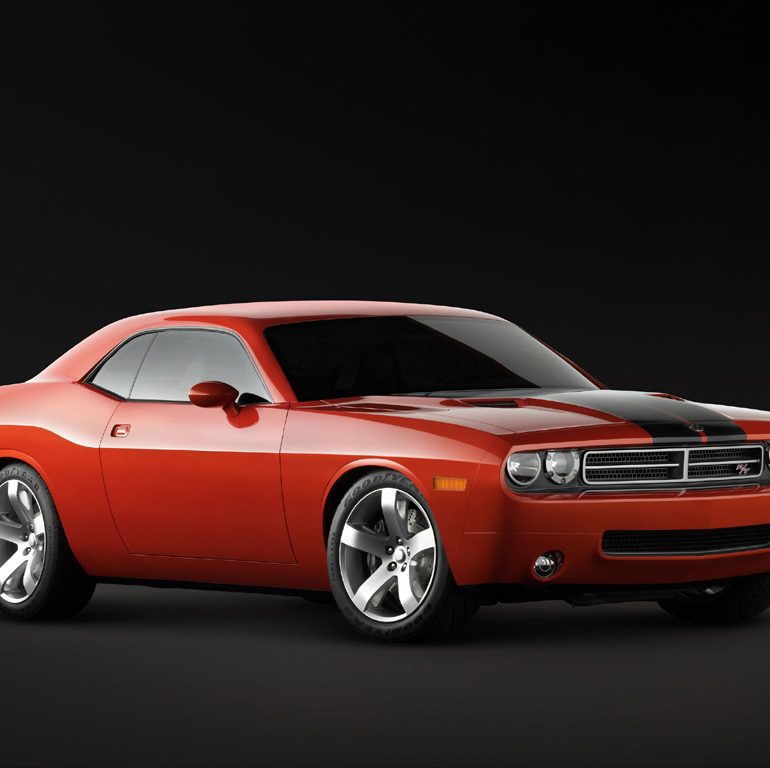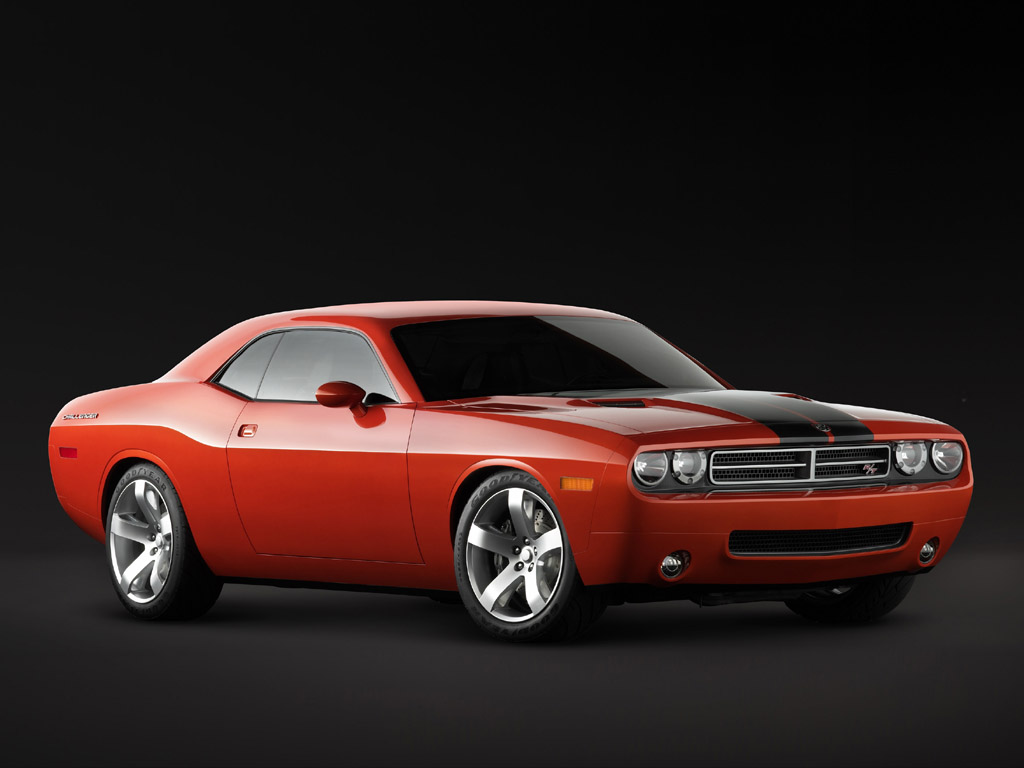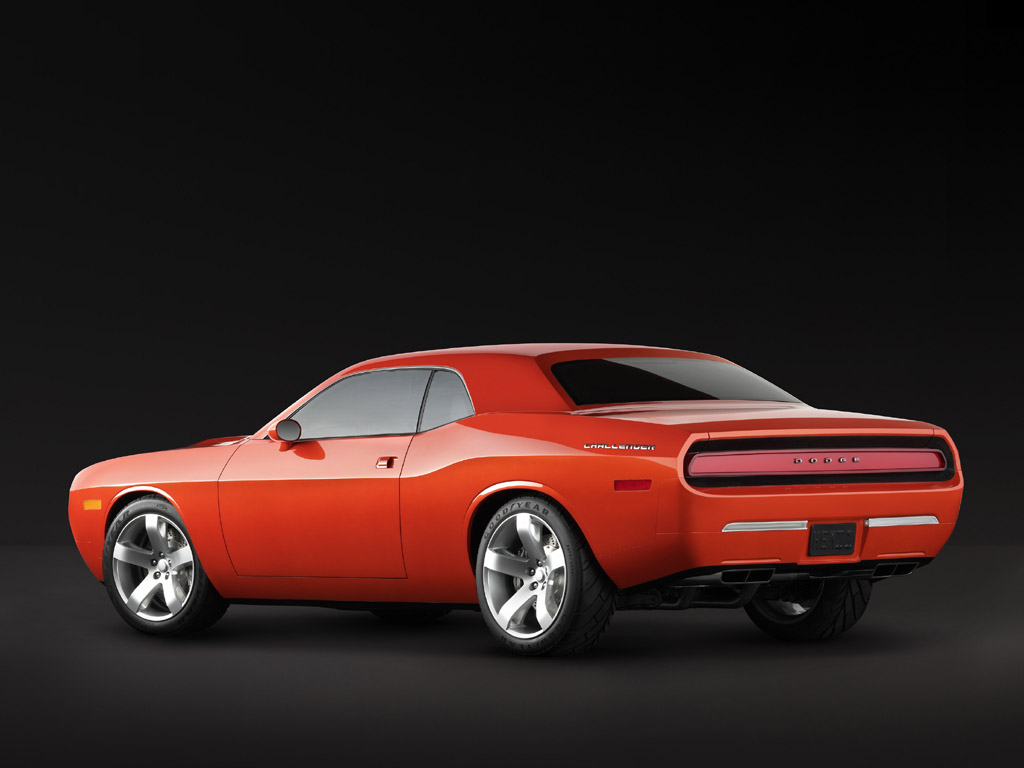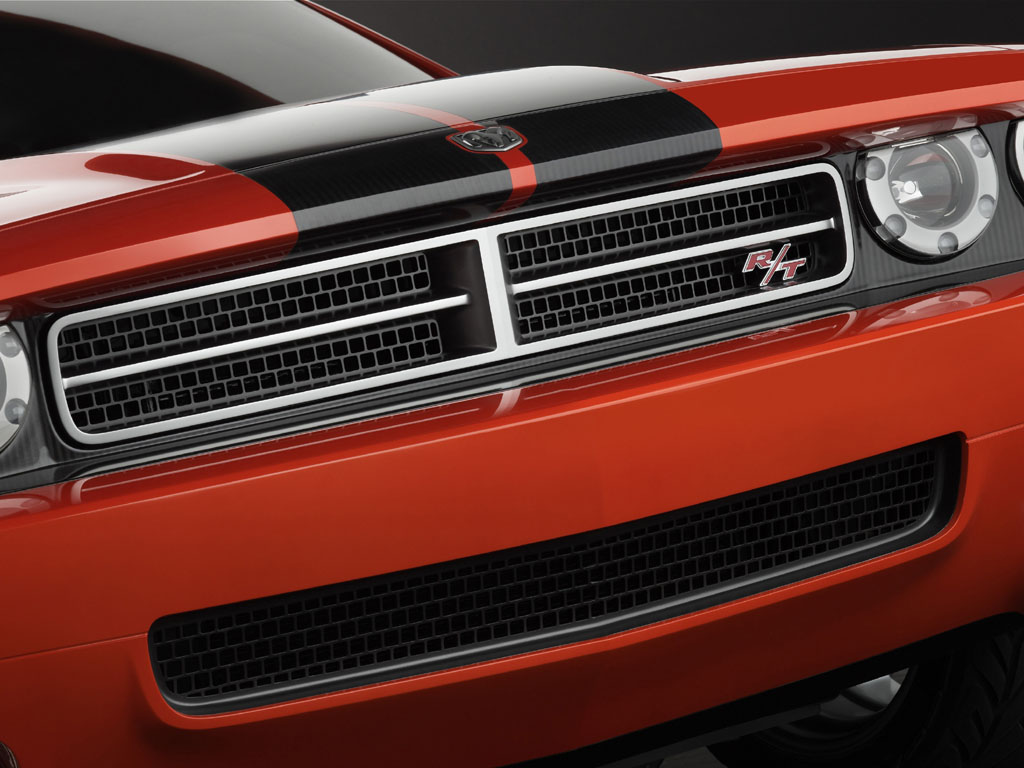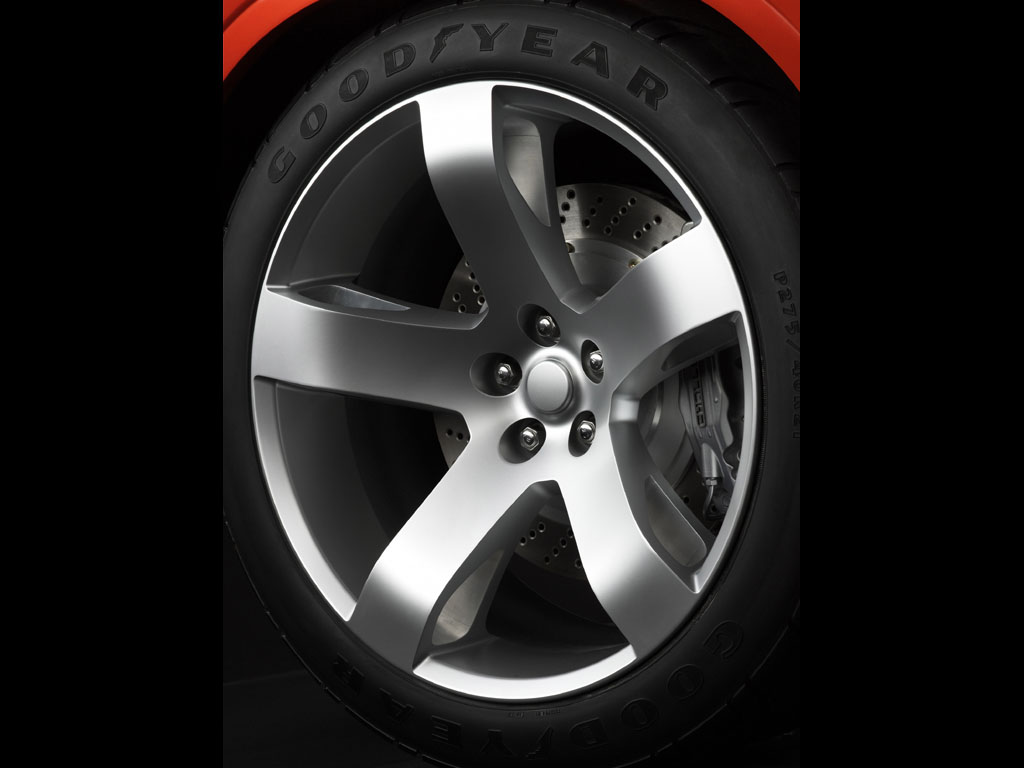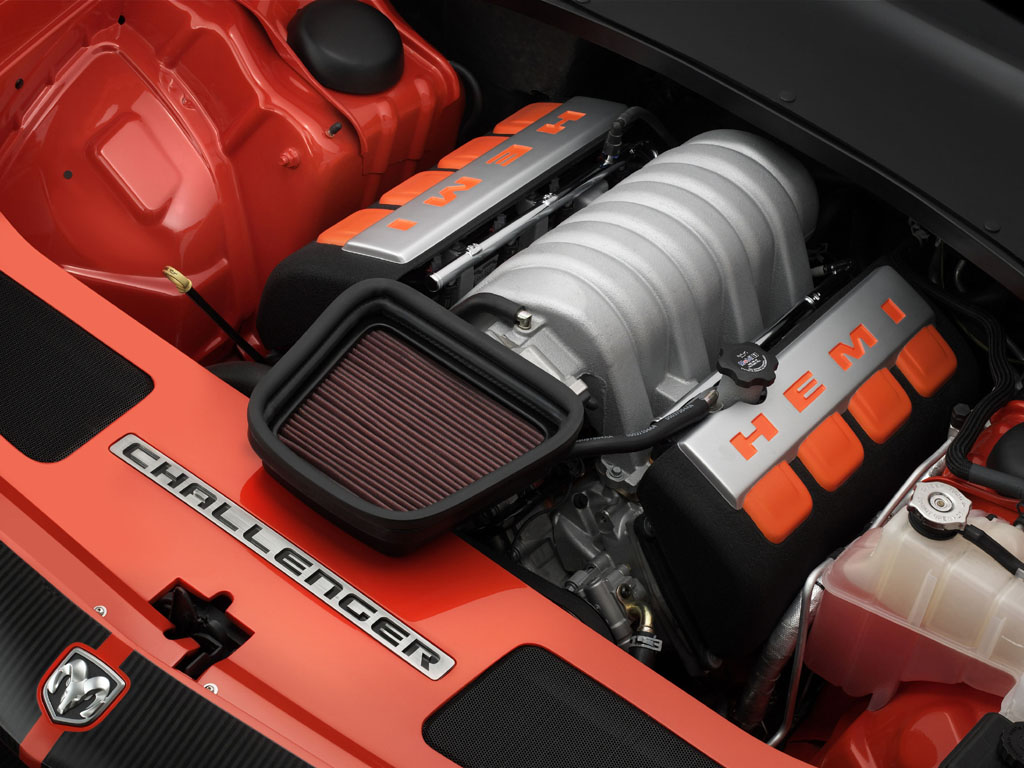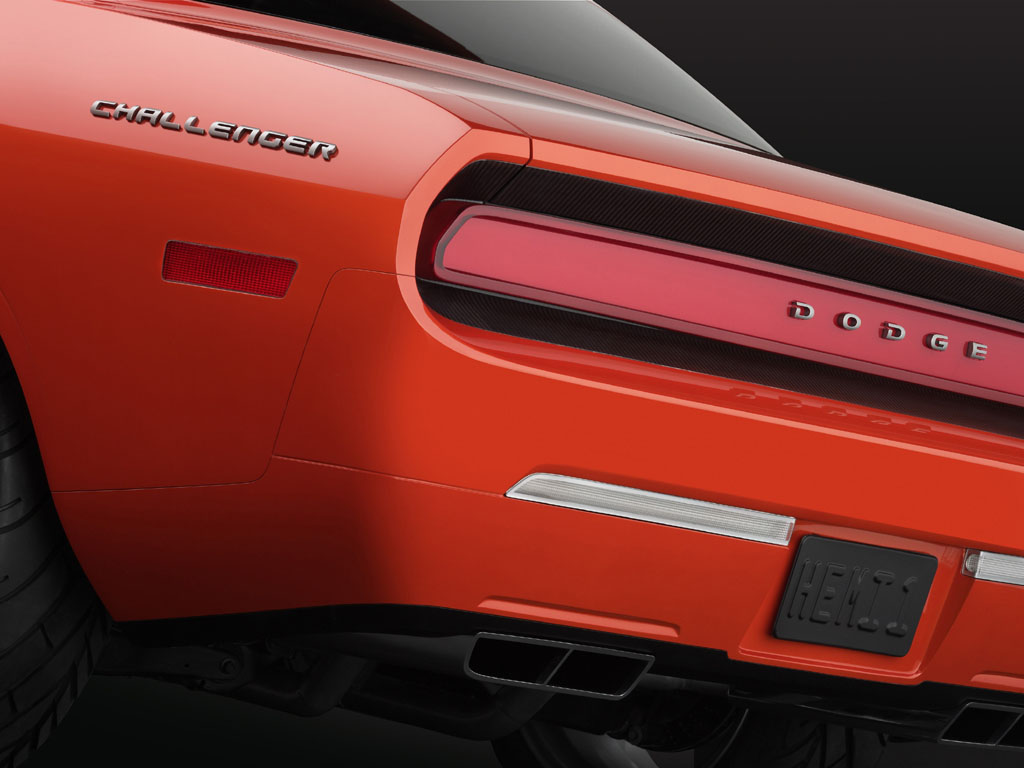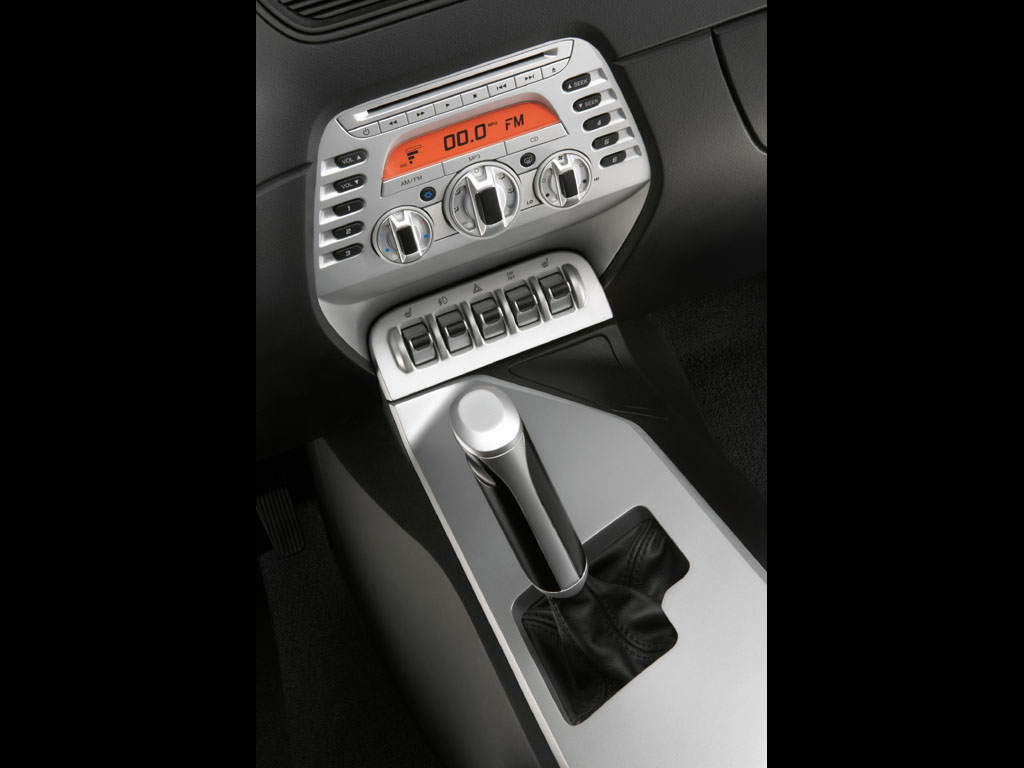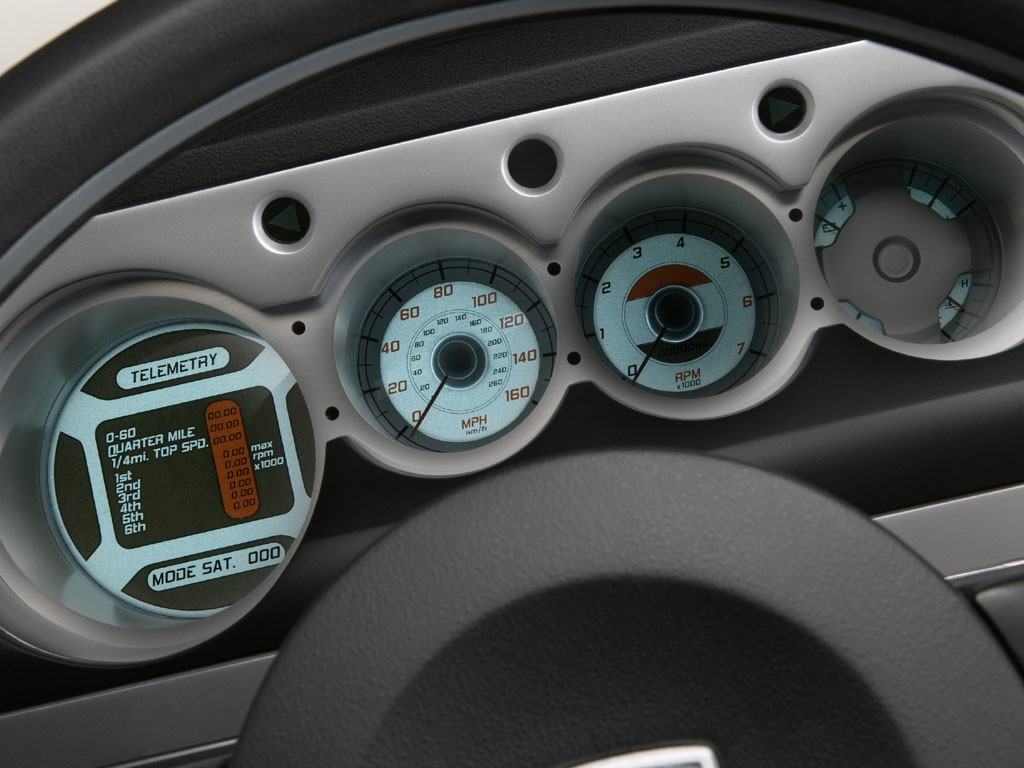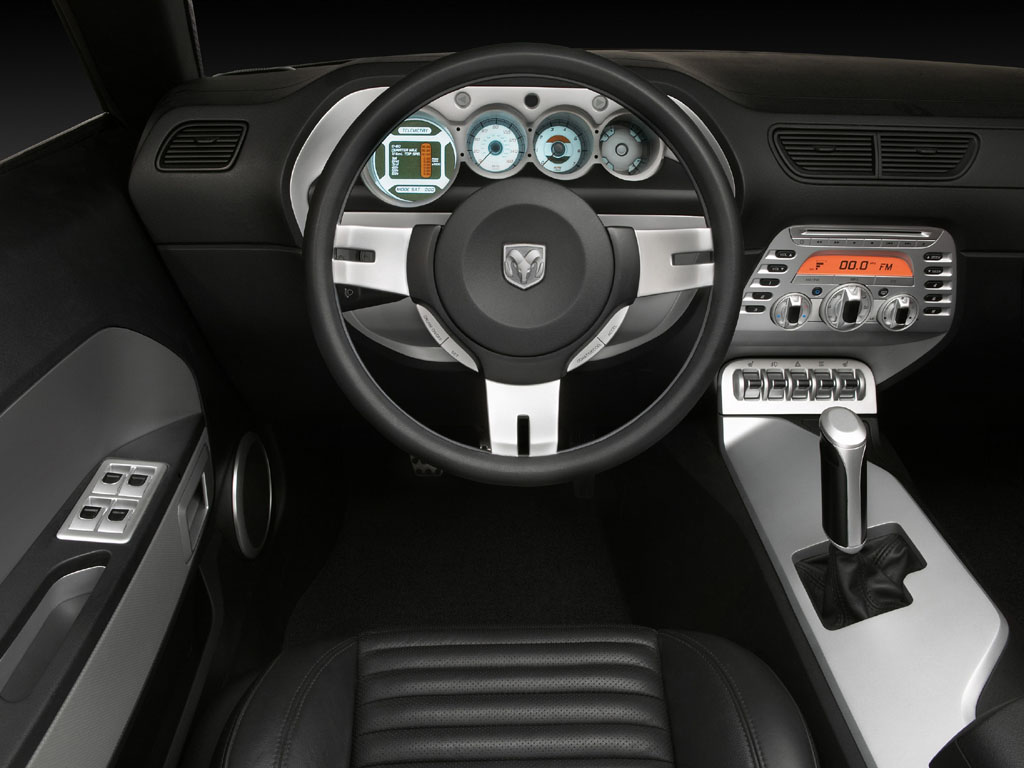2006 Dodge Challenger Concept
Detroit, Jan 8, 2006 – In creating the new Dodge Challenger concept car the designers at Chrysler Group’s West Coast Pacifica Studio knew they had a rich heritage to draw upon.
Tasked with the enviable assignment of developing a hot-looking performance coupe using Chrysler Group’s advanced rear-wheel drive LX platform and its fabled HEMI engine, the designers explored a variety of options, eventually gravitating to something for the Dodge brand – appropriate given that brand’s bold performance image. The idea of reinventing the highly-collectible Challenger quickly came to mind.
Eager to begin, the designers drew up a short list of the essential attributes of a muscle car: distinctly American; mega horsepower; pure, minimal, signature lines; aggressive air-grabbing grille; and bold colors and graphics.
”Challenger draws upon the initial 1970 model as the icon of the series,” said Tom Tremont, Vice President – Advanced Vehicle Design. “The 1970 model is the most sought after by collectors. But instead of merely recreating that car, the designers endeavored to build a Challenger most people see in their mind’s eye – a vehicle without the imperfections like the old car’s tucked-under wheels, long front overhang and imperfect fits. As with all pleasurable memories, you remember the good and screen out the bad.
“We wanted the concept car to evoke all those sweet memories … everything you thought the Challenger was, and more.”
”During the development of the concept car,” says Micheal Castiglione, principal exterior designer, ”we brought an actual 1970 Challenger into the studio. For me, that car symbolizes the most passionate era of automotive design.”
Being key to the image, getting the right proportions was critical. The Challenger concept sits on a 116-inch wheelbase, six inches longer than the original. But its width is two inches greater, giving the concept car a squat, tougher, more purposeful persona.
The signature side view accent line – designers call it the thrust line – is higher up on the body, running horizontal through the fender and door and kicking up just forward of the rear wheel.
In section the upper and lower body surfaces intersect and fall away along this line, which has just a whisper of the original car’s coved surfacing.
”We wanted to stay pure,” said Castiglione, ”with simple, minimal line work, but with everything just right.”
The five-spoke chrome wheels – 20-inch, front; 21-inch, rear — are set flush with the bodyside, giving the car the powerful muscular stance of a prizefighter eager to challenge the world. Wheel openings are drawn tightly against the tires, with the rearward edges trailing off. To emphasize the iconic muscularity, the designers added plan view hip to the rear quarters.
One of the key characteristics of the original car the designers wanted to retain was the exceptionally wide look of both the front and back ends. To achieve this the designers increased both the front and rear tracks to 64 and 65 inches respectively, wider than the LX, wider even than the 1970 model. To realize the long horizontal hood the designers deemed essential, the front overhang was also increased.
Both the hood and the deck lid of the Challenger concept vehicle are higher than the 1970 in order to lift and present the front and rear themes. The front end features the signature Dodge crossbar grille and four headlamps deeply recessed into the iconic car-wide horizontal cavity. Diagonally staggered in plan view, the outboard lamps are set forward, the six-shooter inboard lamps slightly rearward. At the rear, the car-wide cavity motif is repeated, encompassing a full-width neon-lit taillamp. Both the grille and the front and rear lamps are set into carbon-fiber surrounds. Like the original, slim rectangular side marker lamps define the ends of the car.
Bumpers are clean (no guards), body-color and flush with the body. ”This is something we would have loved to do on the original Challenger,” said Jeff Godshall, who was a young designer in the Dodge Exterior studio when the first Challenger was created, “but the technology just wasn’t there. With the Challenger concept, however, the Pacifica Studio designers are able to realize what we wanted in our perfect world.”
The hood reprises the original Challenger performance hood and its twin diagonal scoops, now with functional butterfly-valve intakes. Designed to showcase the modern techniques used in fabricating the car, what look like painted racing stripes are actually the exposed carbon fiber of the hood material.
The Challenger concept is a genuine four-passenger car. “You can sit up in the back seat,” said Castiglione. Compared to the original, the greenhouse is longer, the windshield and backlite faster, and the side glass narrower. All glass is set flush with the body without moldings, another touch the original designers could only wish for. The car is a genuine two-door hardtop — no B-pillar — with the belt line ramping up assertively at the quarter window just forward of the wide C-pillar.
Exterior details one might expect, like a racing-type gas cap, hood tie-down pins, louvered backlite and bold bodyside striping, didn’t make the “cut,” the designers feeling such assorted bits would detract from the purity of the monochromatic body form. But tucked reassuringly under the rear bumper are the “gotta have” twin-rectangle pipes of the dual exhausts.
In contrast to the bright Orange Pearl exterior, the interior is a no-nonsense, let’s-get-in-and-go black relieved by satin silver accents and narrow orange bands on the seat backs. ”Though the 1970 model was looked to for inspiration, we wanted to capture the memory of that car, but expressed in more contemporary surfaces, materials and textures,” said Alan Barrington, principal interior designer. As with the original car, the instrumental panel pad sits high, intersected on the driver’s side by a sculpted trapezoidal cluster containing three circular in-line analog gauge openings.
”We designed the in-your-face gauge holes to appear as if you are looking down into the engine cylinders with the head off,” relates Barrington. These are flanked outboard by a larger circular gauge that is actually a computer, allowing the driver to determine top overall speed, quarter-mile time and speed, and top speed for each of the gears.
With its thick, easy-grip rim, circular hub and pierced silver spokes, the leather-wrapped steering wheel evokes the original car’s Tuff wheel, as does the steering column ribbing. The floor console, its center surface tipped toward the driver, is fitted with a proper pistol grip shifter shaped just right to master the quick, crisp shifts possible with the six-speed manual tranny.
Inasmuch as the original Challenger was the first car to have injection-molded door trim panels (now common practice), the doors received special attention.
“We imagined that the door panel was a billet of aluminum covered with a dark rubberized material,” Barrington relates. “Then we cut into it to create a silver trapezoidal cove for the armrest.”
Although the flat-section bucket seats of the original Challenger didn’t offer much support for aggressive driving, the front seats in the Challenger concept car boast hefty bolsters much like those found on Dodge’s famed SRT series cars. The trim covers’ horizontal pleats or fales provide just a hint of that 70’s look.
Story by Daimler Chrysler
Rethought, reworked, reproportioned and redesigned, the Challenger concept car offers iconic a HEMI-powered performance coupe derived from a classic American muscle car.
Story by Daimlerchrysler
Dodge Challenger Concept Gallery
See full Dodge Challenger Concept Gallery
In Detail
| engine | Hemi V8 |
| fuel feed | Port Fuel Injection |
| displacement | 6059 cc / 369.7 in³ |
| bore | 103 mm / 4.06 in |
| stroke | 90.9 mm / 3.58 in |
| compression | 10.3:1 |
| power | 316.9 kw / 425 bhp @ 6000 rpm |
| specific output | 70.14 bhp per litre |
| torque | 569.44 nm / 420 ft lbs @ 6000 rpm |
| body / frame | Shortened LX Platform |
| driven wheels | RWD |
| f brake size | mm / in |
| r brake size | mm / in |
| wheelbase | 2944 mm / 115.9 in |
| length | 5024 mm / 197.8 in |
| width | 1996 mm / 78.6 in |
| height | 1448 mm / 57 in |
| gear ratios | :1 |


